Prevent the Soviets from breaking through: Turkish fighter aircraft during the Cold War
Turkey Air Defense System. After Turkey joined the North Atlantic Alliance in 1952, this country became one of the largest recipients of US military equipment. It can be stated with full confidence that membership in NATO determined the entire further development of the Turkish air force. Currently, the Turkish Air Force is equipped with American-made fighters or built under an American license.
Given the fact that Turkey was to strengthen the southern flank of NATO, the Americans very generously shared the latest combat aircraft at that time. Already at the end of 1952, the Republic F-84G Thunderjet jet fighter-bomber entered the Turkish Air Force combatant squadrons. The aircraft had a direct wing and could accelerate to horizontal flight to 990 km / h. The Thunderjet was equipped with air refueling equipment and an autopilot, which made it possible to carry out long-distance raids. Due to the capacious outboard fuel tanks, the flight range reached 3240 km.
Although the Thunderjet had good shock capabilities, the J35-A-29 engine with a thrust of 2540 kg for a machine with a maximum take-off weight of about 10 tons was rather weak. Speed limits were also affected by the direct wing. Soon after the start of the combat use of the F-84 in Korea, it became clear that this machine could not compete with the Soviet MiG-15 fighter. However, the F-84G Thunderjet and the advanced version of the F-84F Thunderstreak with swept wings were actively used in Turkey until the early 1970s.
Compared to the early modification, which had a direct wing, the Thunderstrike had a higher flight speed, at a high altitude it developed a speed of 1120 km / h and was better suited as an interceptor. It is reliably known that in addition to the shock functions, the F-84F was used to intercept air targets. So, in August 1962, a pair of F-84F shot down two Iraqi Il-28 bombers, who, during the attack on Kurdish rebel positions, crossed the Turkish border.
To strengthen its ability to intercept air targets, Turkey soon received North American F-86F Saber fighters. The aircraft with a maximum take-off 9350 kg was able to reach a speed of 1107 km / h, and, as the experience of aerial combat in Korea showed, the Saber was not much inferior to the MiG-15.
The next modification of the Saber, which entered service with the Turkish Air Force, was the all-weather interceptor F-86D Saber Dog. The design of the aircraft as a whole remained the same, but the wing was strengthened and the armament of the interceptor changed. There was a rejection of 12,7 mm machine guns in favor of 24 unguided 70 mm Mighty Mouse rockets placed in an automatically extendable launcher located under the engine’s air intake. Thanks to the use of a power plant with a traction on the afterburner 3402 kg, the maximum speed increased to 1115 km / h. In total, 105 Saber fighters, with machine gun and missile weapons, arrived in Turkey from the United States and other NATO allies.
Given the fact that in the mid-1950s the Soviet Air Force and Naval Aviation received the long-range Tu-16 jet bomber, which posed a real threat to the American the fleet in the Mediterranean Sea, the question arose of equipping the Turkish Air Force with supersonic interceptor fighters.
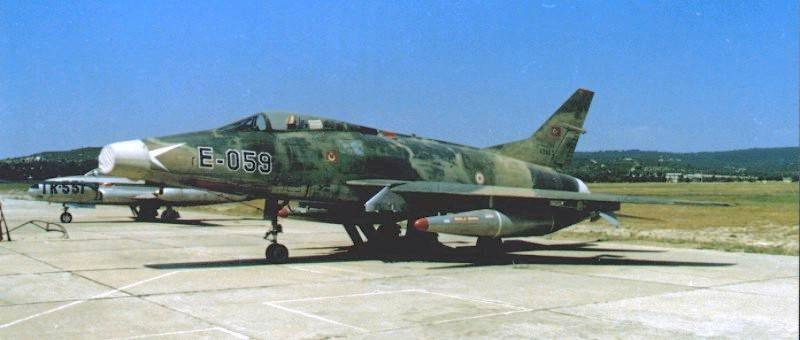
In the early 1960s, North American F-100C Super Saber jet supersonic fighters began to arrive in Turkey, a little later aircraft of a later modification - F-100D - were added to them. Until the first half of the 1970s, 206 F-100C / D single-seat fighters and F-100F two-seat combat training aircraft were delivered to Turkey.
The fighter of the latest serial modification F-100D had a maximum take-off weight of 15800 kg, and on the afterburner could accelerate in horizontal flight to 1390 km / h. The arsenal of the fighter for air combat included four 20-mm guns and four guided missiles AIM-9 Sidewinder. However, due to the lack of a radar on board, the pilot relied on his vision and guidance commands from ground-based radars when he detected an air target. This limited the use of Super Saber as an interceptor, however, the last F-100Ds were retired in 1988.
In 1968, Turkish pilots began developing specialized Convair F-102A Delta Dagger supersonic fighter interceptors transferred from the US Air Force. For training flights, the unarmed “tails” of the TF-102A were used.
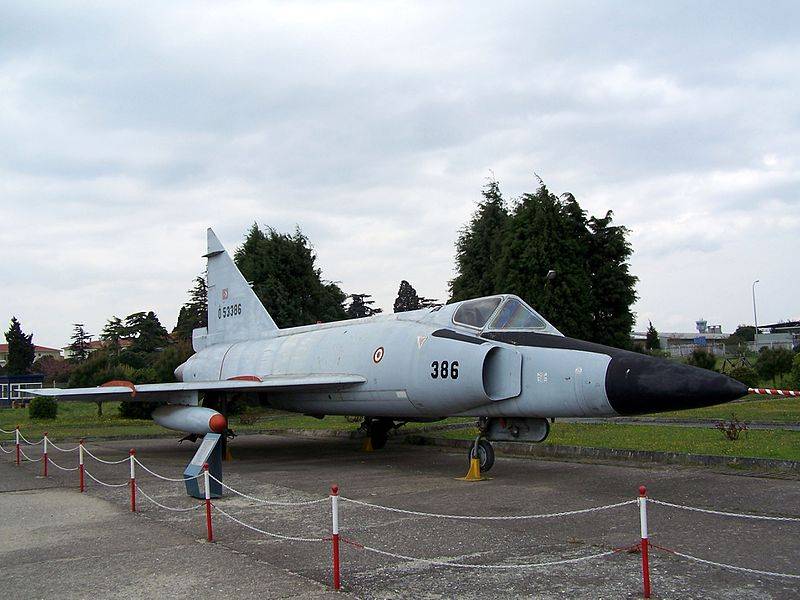
At an altitude of 12000 m, the F-102A could accelerate to 1380 km / h. The interceptor was equipped with a radar with a range of 30 km. In the automated mode, the “Delta Degger” was displayed according to the commands of ground stations to the target area, after which the pilot detected it by the airborne radar. The main flight parameters entered the main board computer and were used to issue data to flight instruments and fire control systems. There were no guns on the interceptor; air targets were to be defeated using 24 70-mm NAR or four guided AIM-4 Falcon missiles. After the Turkish radar stations were integrated into the NATO Air Defense System in the second half of the 1970s, Turkish interceptors were able to receive target designation from other countries' guidance posts.
The fifty F-102A received by Turkey significantly increased the ability to intercept visually unobserved air targets, but this triangular-wing fighter proved to be quite complicated and emergency. Pilots of the 182nd air defense squadron flew on the F-102A from the Diyarbakir air base until mid-1979, after which they transferred to the F-104S interceptors.
Fighter Lockheed F-104 Starfighter, adopted in the early 1960s as the "single fighter" of NATO, in Russian literature is called the "flying coffin." At the same time, authors writing on aviation topics refer to the high accident rate of the F-104G in the Luftwaffe, which was actually due to improper operation of the aircraft.
Although the US Air Force abandoned Starfighter after a short operation, German generals, inspired by Lockheed advertising, found it possible to make a universal fighter: an interceptor, fighter-bomber, reconnaissance aircraft, from an aircraft that was originally designed as a high-speed high-altitude interceptor. At the same time, a fighter with a short, thin and straight wing, which was quite strict in control, when attacking ground targets, had to fly in the most inappropriate conditions for it: at low altitudes and at high speed. As a result, the smallest mistake of the pilot could lead to an emergency situation, exacerbated by the imperfection of the ejection seat, which did not provide rescue below 200 m. Subsequently, his reputation was played against the F-104G when not too experienced pilots in the case of even minor failures that did not pose a safety risk flight, they preferred to eject from the car, not trying to return to their airfield. On the other hand, the experience of operating the F-104 in countries where, under the control of well-trained pilots, Starfighter was used as an air defense interceptor and did not perform risky low-altitude flights, it demonstrates that its accident rate was even lower than that of the Soviet MiG-21 and Su -7B.
For the early 1960s, the F-104G as an interceptor had good potential. The maximum speed at altitude was 2125 km / h. Ceiling - 18300 m. Practical flight range - 1700 km. Maximum takeoff weight - 13170 kg, normal - 9000 kg. The General Electric J79-GE-11A turbojet engine with 7070 kg afterburner thrust provided good acceleration performance. In this regard, Starfighter surpasses not only many of its peers, but also some later fighters. The rate of climb of the serial F-104G was 254 m / s, it climbed to a height of 12 m in 200 min 1 sec, and to reach a height of 30 m it took 17 min 200 sec. The F-6G was equipped with a fairly advanced avionics built on semiconductor elements. Thanks to the inertial navigation system and the presence on board the radar with a detection range of up to 30 km, it was possible to intercept at night and in bad weather conditions.
Operation of the F-104G fighters in the Turkish Air Force began in 1963, 9 squadrons were equipped with Starfighters. At the first stage, Turkey received 48 new single F-104Gs and six TF-104G trainings. In 1975-1978, an additional 40 new Italian-made F-104S interceptors were received. In the 1980s, more than a hundred F-104Gs and CF-104Ds came from the Netherlands and Canada. In total, Turkey received more than 400 Starfighters from various NATO countries, although many of these aircraft were disassembled and used as a source of spare parts.
Initially, F-104G pilots could use a 20-mm M61A1 Vulcan six-barreled gun and two AIM-9B Sidewinder URs with a thermal homing head against air targets. Obtained from Italy, the F-104S had more advanced radars capable of seeing the target against the backdrop of the earth. Control system weapons allowed the use of new AIM-9L Sidewinder missiles, as well as medium-range missiles with semi-active radar guidance AIM-7 Sparrow and Selenia Aspide. Good opportunities as an interceptor and a large supply of spare parts allowed extending the Starfighter service in Turkish air defense squadrons until 2004.
Currently, several decommissioned F-104G and F-104S fighters are displayed in Turkish museums and are installed as monuments in the vicinity of air bases and major civilian airports.
In the early 1970s, the Netherlands donated 70 used NF-5A / B Freedom Fighters to Turkey for free. These aircraft were manufactured under American license in Canada by Canadair. Compared to Starfighter, the lightweight Freedom Fighter is much simpler to operate and easier to operate. Since the aircraft had two General Electric J85-GE-13 engines with afterburner thrust of 1850 kg each, flight safety was much higher than that of other single-engine fighters of the Turkish Air Force.
Single F-5A has a maximum take-off weight of 9380 kg. Although its maximum speed only slightly exceeds the sound barrier and is only 1315 km / h, due to the relatively low load on the wing, the F-5A has good maneuverability, which made it a dangerous opponent in close air combat. To fulfill the tasks of gaining dominance in the air and intercepting weapons, there are two 20 mm M-39A2 guns and two AIM-9 Sidewinder melee defense systems. The combat radius in the configuration for air combat is 900 km.
In the late 1980s and early 1990s, two dozen NF-5A / B fighters underwent refurbishment, which allowed these machines to be used for about another two decades. Considering the fact that light fighters were mainly used for training flights, their service lasted until 2014.
Apparently, Turkey remained the only country where F-5A / B Freedom Fighter aircraft are still operating, whose age has already approached a half-century anniversary. Although there are no longer any NF-5A / Bs in Turkish combat squadrons, pilots from the Turkish Stars aerobatic team perform on these aircraft.
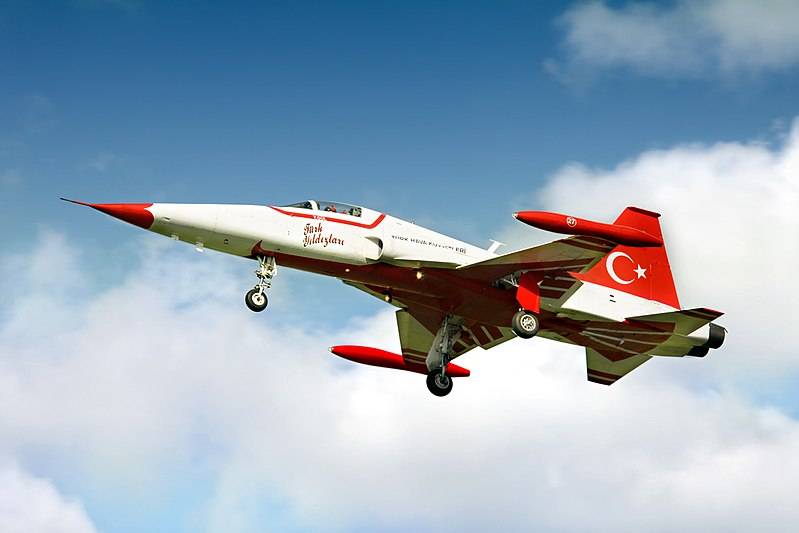
To perform demonstration flights from fighters carrying a red and white color, guns, weapon mounts, and some of the airborne equipment needed to carry out combat missions were dismantled. As such, the Turkish NF-5A / B performed at the air show since 1993. Over the past decade, it was possible to maintain 8-9 aircraft in working condition.
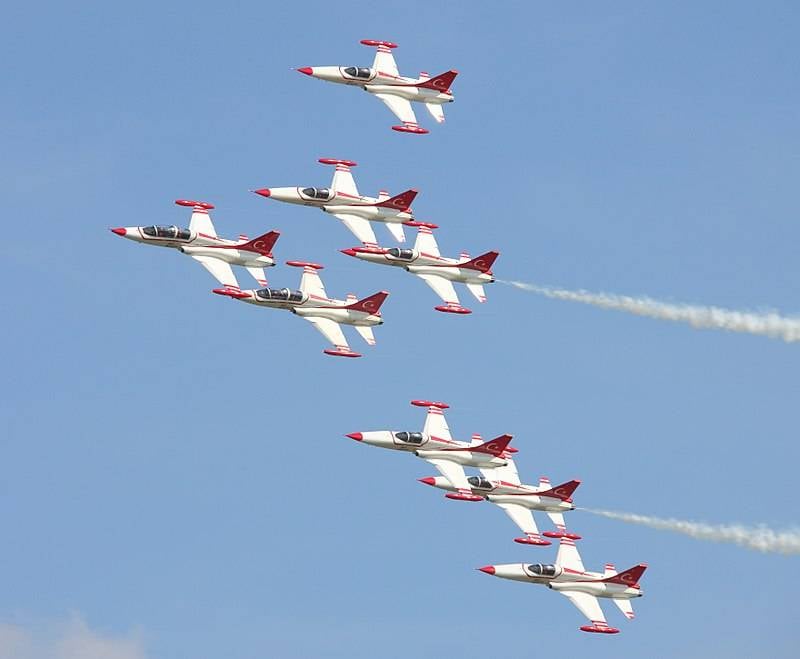
Turkey is very proud that they have an aerobatic team performing demonstration flights on supersonic fighters. Many foreign aerobatic teams fly in subsonic training aircraft. However, due to the development of the resource, in the near future, the NF-5A / B will be decommissioned, and Turkish Stars pilots will most likely transfer to F-16C / D fighters.
The capabilities of the Turkish Air Force were significantly strengthened after the start of deliveries in 1974 of the McDonnell Douglas F-4E Phantom II two-seater heavy fighter. Due to the good overclocking performance, perfect for its time avionics, the presence on board a powerful radar AN / APQ-120 with a detection range of 75 km and the possibility of suspension of guided medium-range missiles AIM-7 Sparrow, in addition to performing strike missions, the F-4E could be a good air defense interceptor.
Modification F-4E, perhaps, is the most advanced serial modification of the "Phantom", produced by McDonnell Douglas. The aircraft with a maximum take-off weight of 28 kg had a combat radius of about 030 km. Ferry range - 1000 km. Ceiling - 4180 m. Two General Electric J18000-GE-79A engines with 17 kN afterburner thrust accelerated the aircraft in horizontal flight at an altitude of 80 m - up to 12000 km / h. A fighter equipped for air combat could carry 2 short-range missiles AIM-370 Sidewinder and 4 UR medium-range AIM-9 Sparrow. For close combat, there was a 4 mm M7A20 Vulcan gun on board.
The first batch, received in 1974, totaled 40 Phantoms. As part of the Peace Diamond III military assistance program, between 1977 and 1979, the United States additionally transferred 32 used F-4Es. Under the Peace Diamond IV program, Turkey in 1987 received another 40 aircraft previously armed with the US National Air Guard. Also, after the Luftwaffe was withdrawn from service in the mid-1990s, the last F-4Fs, Germany donated a large number of spare parts and consumables to the Republic of Turkey.
In 1995, an agreement was concluded with the Israeli company Israel Aerospace Industries (IAI) on the modernization of Turkish Phantoms. The work was carried out under the general direction of the Turkish state company Aselsan, which acted as the program integrator.
The modernized aircraft, known as the F-4E 2020 Simser or the Terminator, after major repairs received new hydraulics and electrical wiring. At the disposal of the crew appeared modern navigation, communication and data exchange systems. Instead of direction indicators in the cockpit - multifunction displays. The Turkish "Terminator", focused mainly on solving shock problems, is equipped with the Israeli radar Elta EL / M-2032 and the hanging sighting container "Lightning" with infrared cameras, laser rangefinders and target tracking sensors. For electronic suppression of anti-aircraft missile heads in the avionics included a system for setting active interference Elta EL / L-8222.
Thanks to a new, more advanced radar, the detection range of a bomber-type target is 150 km, which, combined with medium-range missiles, makes it possible to successfully intercept air targets out of direct line of sight in the dark and in difficult weather conditions.
The first modernized Phantoms entered the 111th and 171st squadrons in 2000. The modernization of all F-4E 54 was completed in 2003. However, the process of further modernization of the Turkish Phantoms did not stop there. In March 2010, the Turkish Air Force received the first F-4E Simsek fighter-bomber, during the modernization of which the improvements implemented in the RF-4E Isik scouts were used.
According to reference data, in 2011 in the Turkish Air Force combat squadrons there were 65 modernized Phantom fighter-bombers. Turkish F-4E fighters flew until 2016, after which the aircraft were put into reserve. Now these machines are located at the storage base located at Eskisher airbase. NF-5A / B and F-16C / D fighter-exhausted fighters are also sent here.
In the late 1970s, the Turkish Air Force included 19 combat squadrons, 12 were fighter-bomber, five were fighter, and two were reconnaissance. In total, the Air Force had a little more than 330 combat aircraft, of which about 90 aircraft were carriers of nuclear weapons. Turkish fighter aircraft provided air defense to NATO’s southern flank. Given the fact that in the days of the USSR, long-range Tu-16 and Tu-22M3 missile bombers were based in Crimea, the Turkish Air Force interceptors were tasked with preventing them from breaking through to the ships of the Sixth Fleet of the US Navy in the Mediterranean Sea, and striking at targets in Turkey and other NATO countries.
In addition, the Turkish military aviation kept the air defense forces of Iraq, Syria, the USSR and Bulgaria in constant tension, periodically flying into the airspace of neighboring states. The pilots of the Super Sabers were especially keen on this. Using good controllability of F-100C / D fighters and a difficult terrain, Turkish pilots at low altitude and high speed jumped into the depths of the territory of other countries, and managed to retreat with impunity before fighters took off to intercept them. After several such incidents, additional air defense forces were deployed on the border from Bulgaria, Georgia and Armenia. The number of violations of the state border sharply decreased after the Bulgarian anti-aircraft artillery began to open fire on Turkish fighters. On August 24, 1976, a pair of Turkish F-100 fighter-bombers was fired on anti-aircraft missiles over the territory of Armenia. One plane with a close gap in the warhead of a missile launcher received fatal injuries and crashed in Turkey. On September 14, 1983, the Turkish F-100D fighter (according to other sources it was a double F-100F) after violating Iraqi airspace was attacked and shot down by the Iraqi Air Force Mirage F1 fighter.
The largest armed conflict in which Turkish jet fighters took part was the invasion of northern Cyprus in 1974 (Operation Attila). During the active phase of the operation, which lasted from July 20 to 23, the Turkish Air Force made 799 sorties. Of these, 452 sorties were aimed at delivering bombing and assault attacks on ground and surface objects, 109 sorties were aimed at providing air defense, and 52 sorties were carried out for reconnaissance of ground targets in Cyprus. The purpose of another 66 sorties was reconnaissance and patrolling of the Mediterranean marine areas. At the same time, the Turkish Air Force recognized the loss of five F-100C / D, two F-102A, and one F-104G. The bulk of the fighters lost during the conflict in Cyprus, died in flight accidents. After Turkish troops captured part of Cyprus, tensions between Turkey and Greece did not subside. In 1985-1986, interceptions and maneuvers took place between the Greek F-4E and Turkish F-104G. According to unconfirmed information, two Turkish Starfighters crashed during these interceptions.
Separately, it is worth mentioning the deployment during the years of the Cold War in Turkey of a group of American fighters of the 39th tactical aviation group of the US Air Force. In the 1970s, the U.S. Air Force aviation group included more than 20 F-4C fighters, which on a rotational basis relocated from the Torrejon air base (Spain) and carried out constant combat duty at the Incirlik air base (Turkey).
Shortly before the end of the Cold War, in 1987, light fighters of the 4th generation General Dynamics F-16 Fighting Falcon began to enter the Turkish Air Force. In the period from 1987 to 1995, Turkey received 155 F-16C / D aircraft from the United States. Subsequently, fighters of this type became the basis of the air force, and their licensed production was established in Turkey. But we will talk about the current state of Turkish fighter aircraft and its development prospects in the next part of the review.
To be continued ...
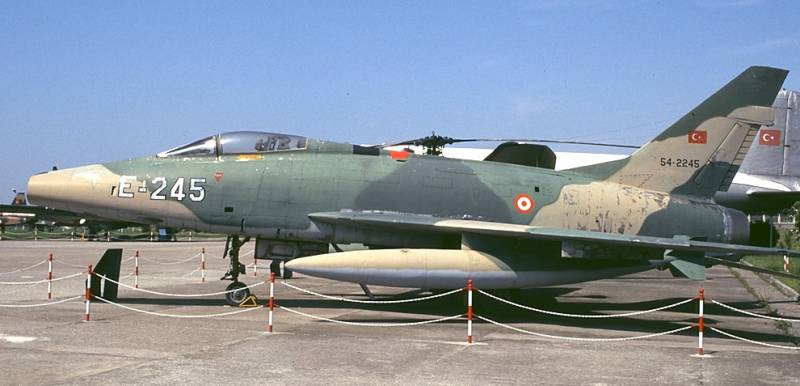
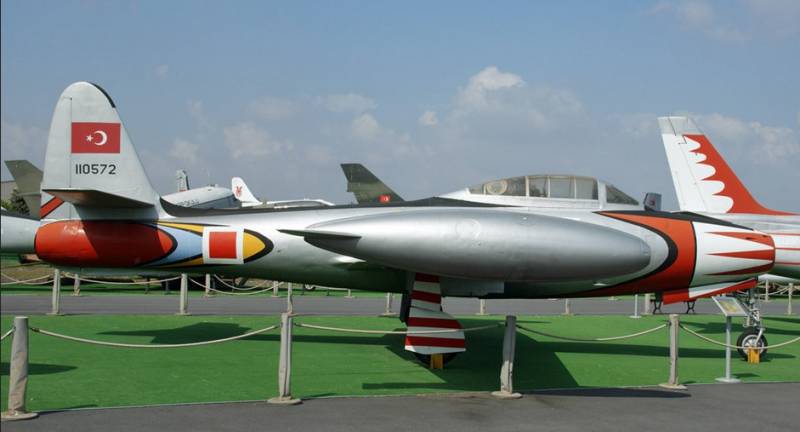
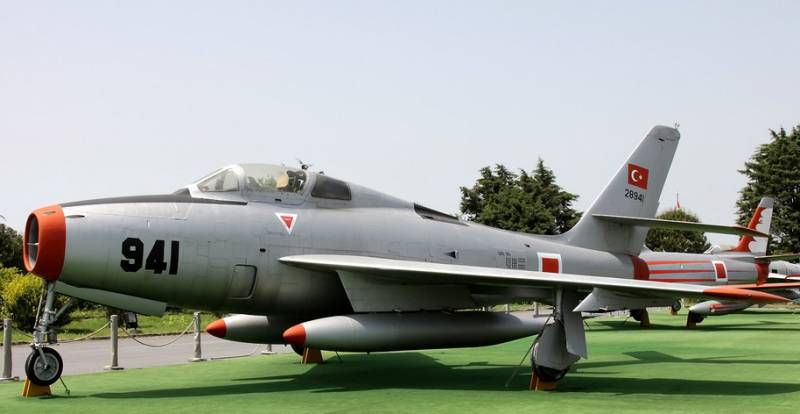
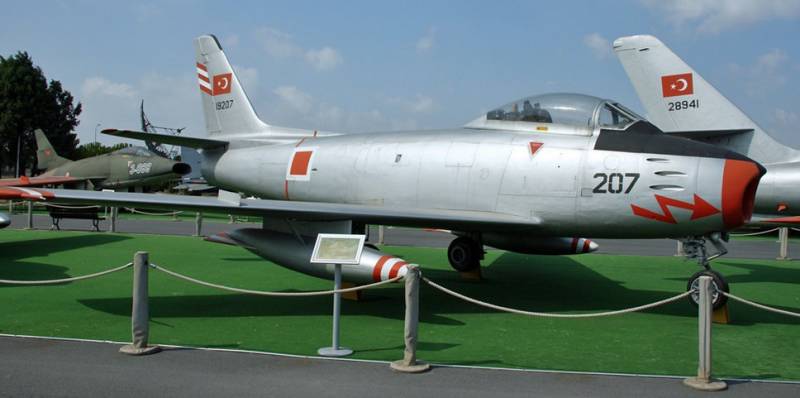
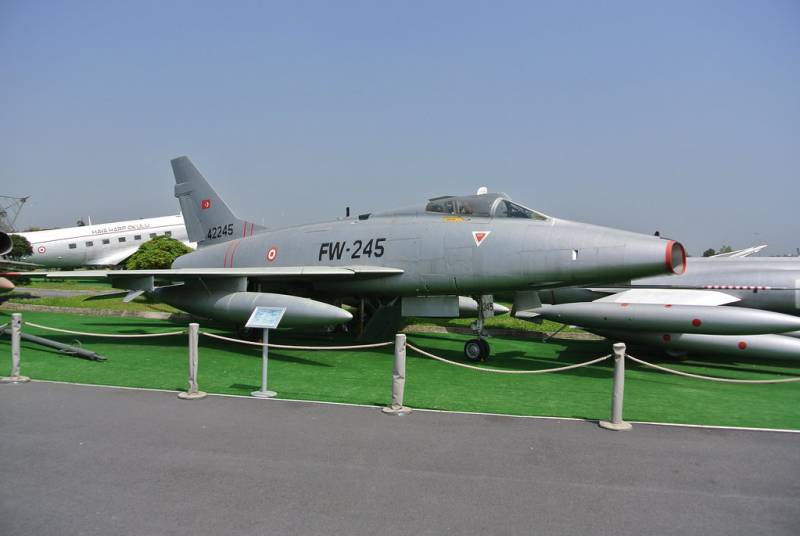
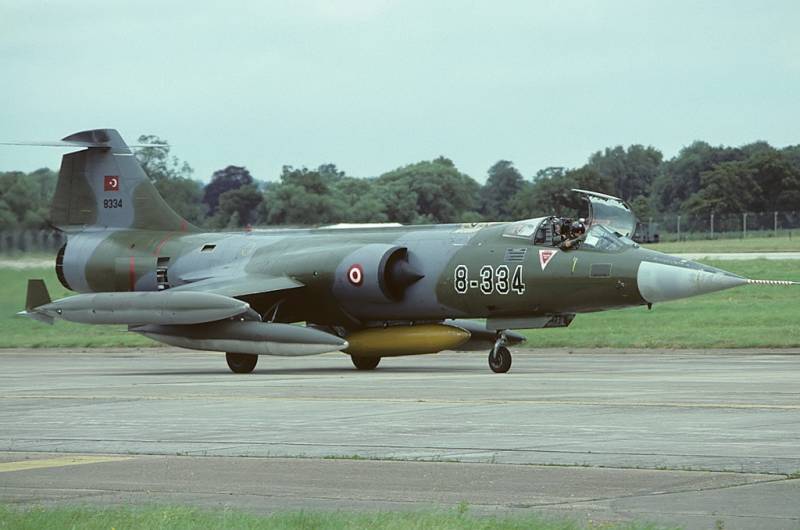
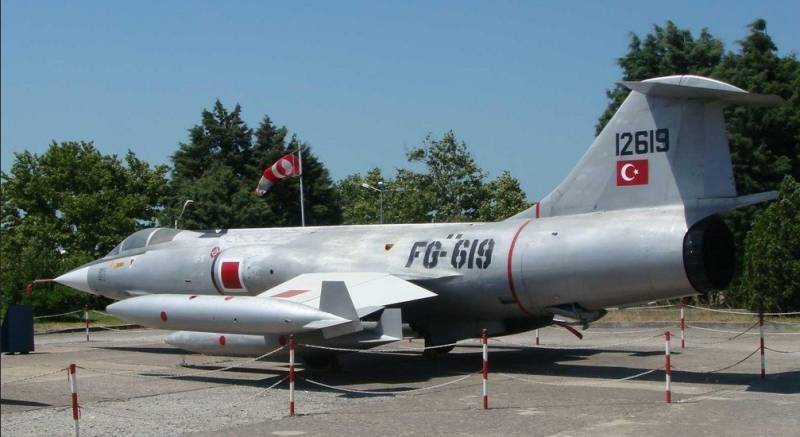
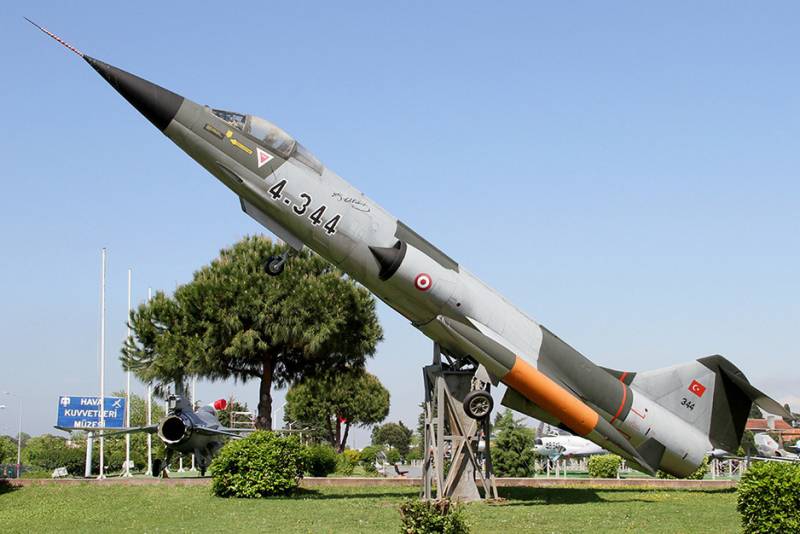
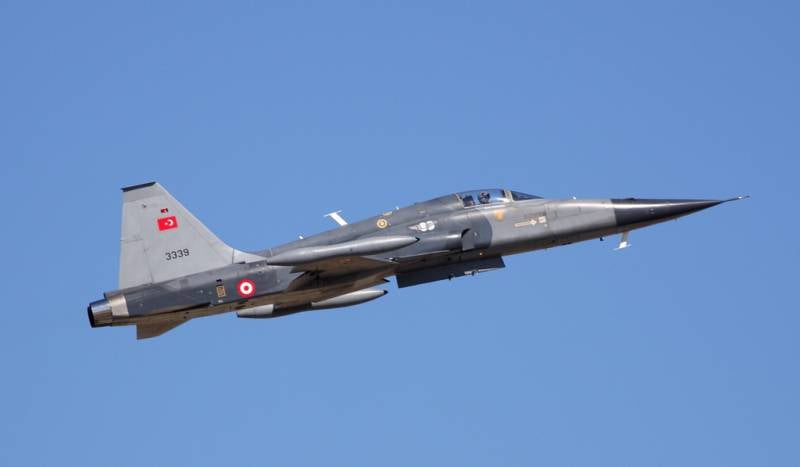
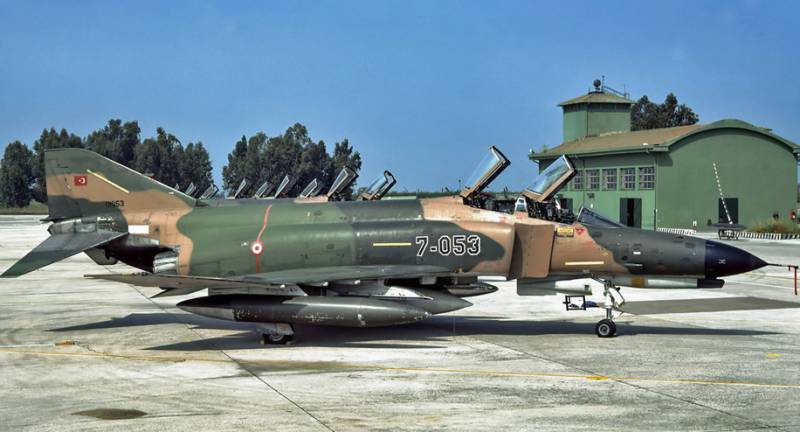
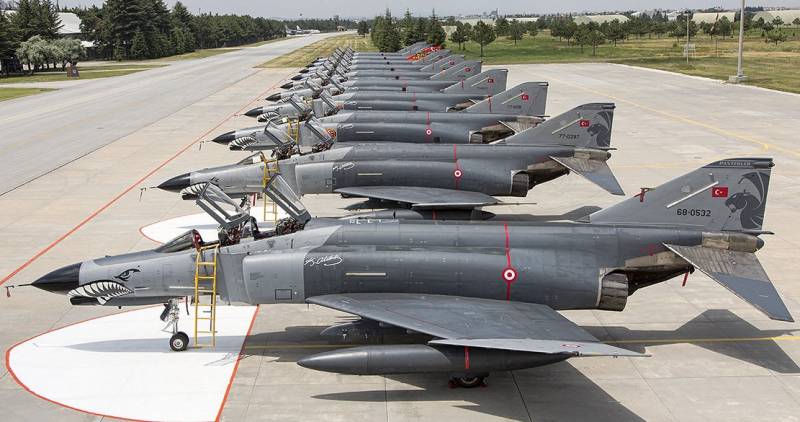
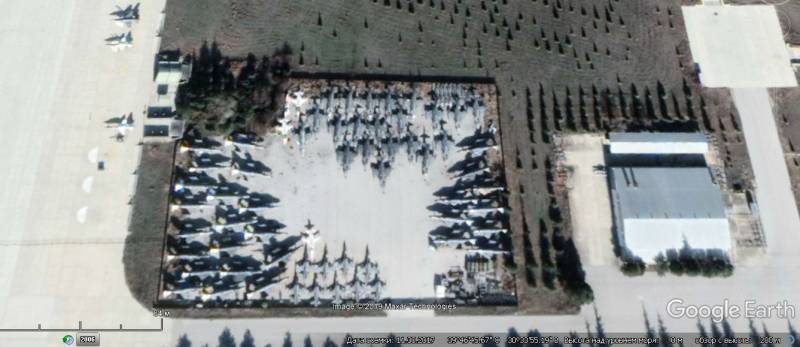
Information